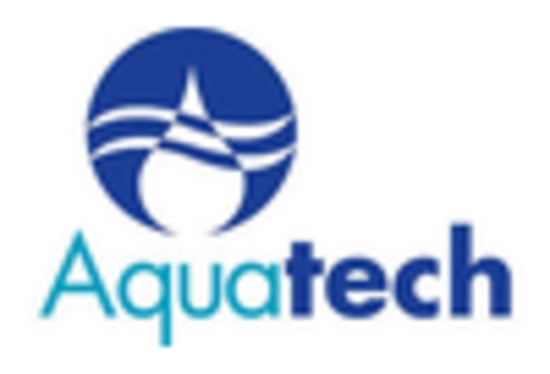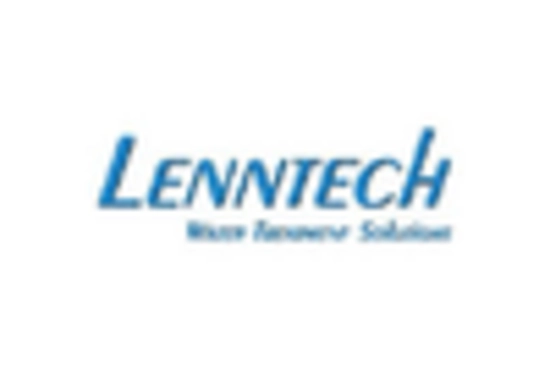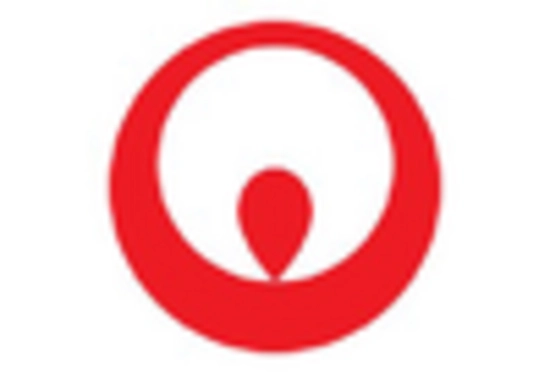Rising Water Scarcity
The escalating issue of water scarcity is a significant driver for the Zero Liquid Discharge System Market. As freshwater resources become increasingly limited due to population growth and industrial demands, industries are compelled to seek sustainable solutions for water management. Zero liquid discharge systems offer a viable approach to conserve water by treating and reusing wastewater, thereby reducing the overall demand for freshwater. This trend is particularly evident in arid regions where water scarcity poses a critical challenge to industrial operations. The market is expected to expand as more companies adopt these systems to mitigate water-related risks and ensure operational sustainability. Analysts predict that the Zero Liquid Discharge System Market will continue to grow as water scarcity issues become more pronounced, prompting industries to invest in innovative water management solutions.
Technological Advancements
Technological innovations play a crucial role in driving the Zero Liquid Discharge System Market. Recent advancements in membrane technologies, evaporation techniques, and crystallization processes have significantly improved the efficiency and cost-effectiveness of zero liquid discharge systems. For instance, the development of advanced membrane filtration systems has enhanced the recovery of valuable resources from wastewater, making these systems more attractive to industries. Furthermore, the integration of automation and real-time monitoring technologies allows for better operational control and optimization, reducing overall operational costs. As industries increasingly seek to minimize waste and recover resources, the Zero Liquid Discharge System Market is likely to benefit from these technological advancements, with market analysts projecting a steady increase in adoption rates across various sectors.
Sector-Specific Applications
The diverse applications of zero liquid discharge systems across various sectors significantly contribute to the growth of the Zero Liquid Discharge System Market. Industries such as oil and gas, mining, and power generation are increasingly adopting these systems to manage their wastewater effectively. For example, in the oil and gas sector, zero liquid discharge systems are utilized to treat produced water, thereby minimizing environmental impact and ensuring compliance with regulations. Similarly, in the mining industry, these systems help in recovering valuable minerals from wastewater, enhancing resource efficiency. The versatility of zero liquid discharge systems in addressing sector-specific challenges indicates a robust demand trajectory, with market forecasts suggesting a potential increase in market size as more industries recognize the benefits of adopting these systems.
Corporate Sustainability Initiatives
The growing focus on corporate sustainability initiatives is increasingly influencing the Zero Liquid Discharge System Market. Companies are recognizing the importance of integrating sustainable practices into their operations to meet stakeholder expectations and enhance their brand reputation. Implementing zero liquid discharge systems aligns with these sustainability goals by minimizing waste and promoting resource recovery. As consumers and investors alike demand greater transparency and accountability regarding environmental practices, businesses are more likely to invest in zero liquid discharge technologies. This shift towards sustainability is expected to drive market growth, with projections indicating a rise in investments in zero liquid discharge systems as part of broader corporate sustainability strategies. The Zero Liquid Discharge System Market is thus poised for expansion as organizations strive to balance profitability with environmental responsibility.
Regulatory Compliance and Environmental Awareness
The increasing emphasis on environmental regulations is a primary driver for the Zero Liquid Discharge System Market. Governments and regulatory bodies are implementing stringent policies aimed at reducing industrial waste and promoting sustainable practices. This regulatory landscape compels industries, particularly in sectors such as textiles, pharmaceuticals, and food processing, to adopt zero liquid discharge systems to comply with environmental standards. As a result, the market is projected to witness substantial growth, with estimates suggesting a compound annual growth rate of over 10% in the coming years. Companies that proactively implement these systems not only avoid penalties but also enhance their corporate image, thereby gaining a competitive edge in the market. The Zero Liquid Discharge System Market is thus positioned to expand as more organizations recognize the importance of environmental stewardship.


















Leave a Comment